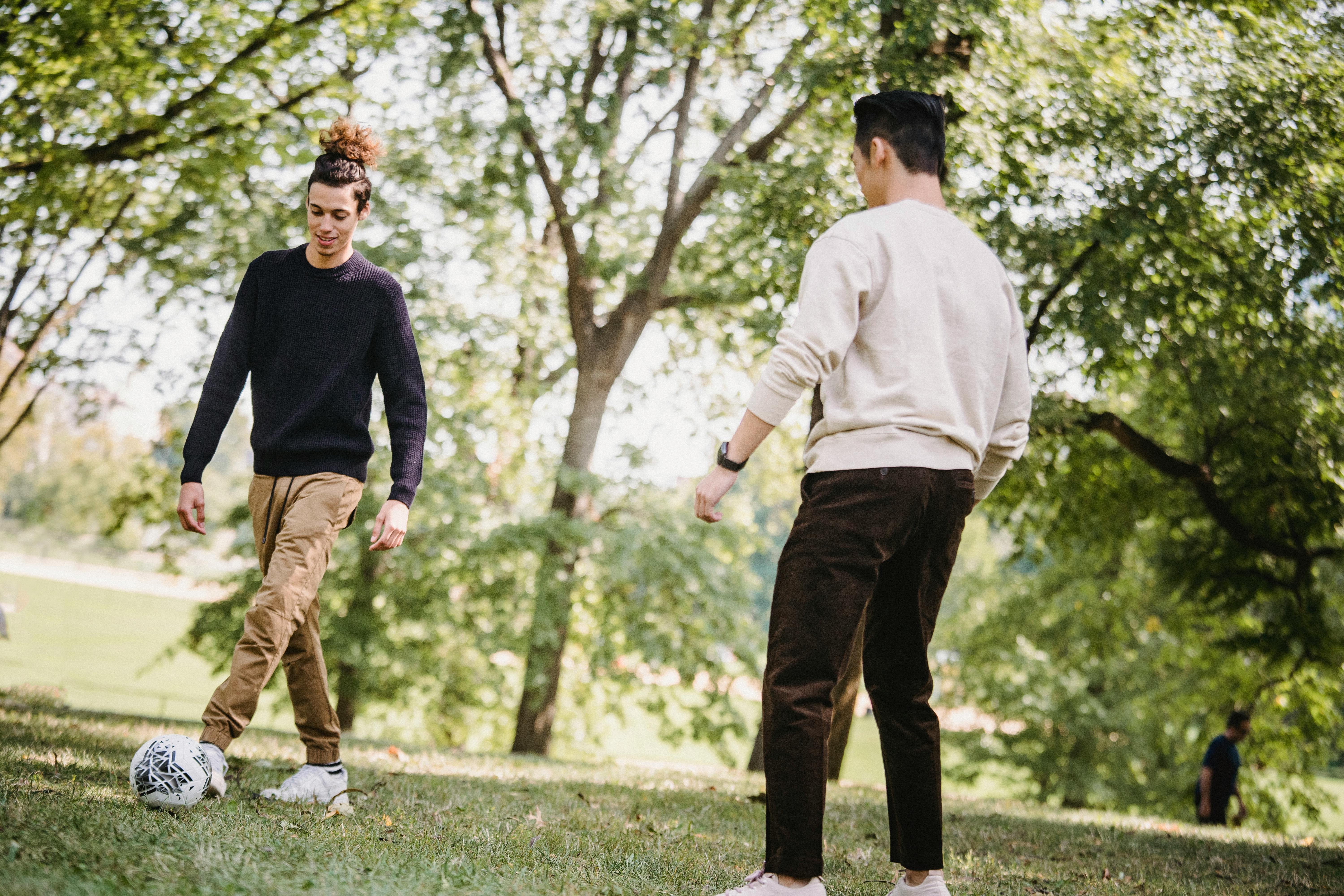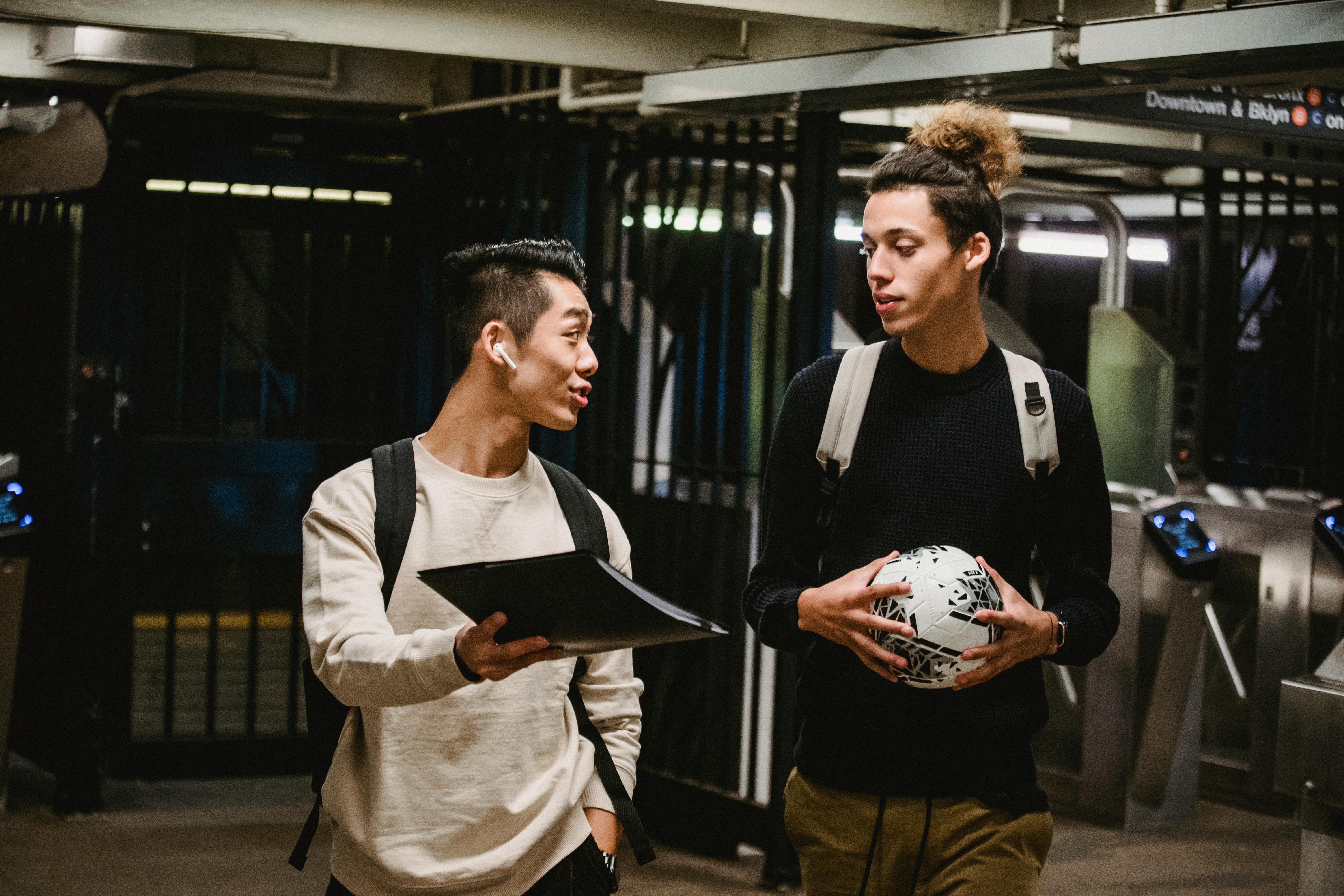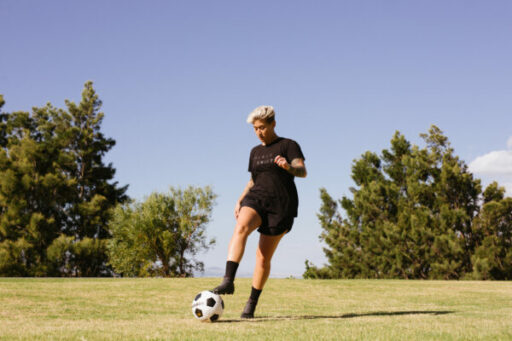Soccer is one of the most popular sports in the world and it is played by millions of people in various countries. It is a team sport that requires players to work together in order to be successful. One of the key elements of soccer is understanding the different positions on the field and their roles. The 11 positions in soccer are goalkeeper, defender, midfielder, forward, attacking midfielder, central midfielder, left fullback, right fullback, left winger, right winger and striker. Each position has its own unique responsibilities and skills which are essential for any team’s success. In this article we will take a closer look at each position and what they do on the field.The 11 positions in soccer are goalkeeper, right-back, left-back, center-back, defensive midfielder, central midfielder, attacking midfielder, right winger, left winger, center forward and striker.
Goalkeeper
A goalkeeper is an important player in a soccer game. He is the last line of defense, and thus it is essential that he be well-trained and have the right skills to protect the goal. The goalkeeper should possess excellent reflexes, agility, and the ability to read the game. He must also have strong leadership qualities, the ability to communicate effectively with his teammates, and a good understanding of angles and positioning. Goalkeepers need to be able to make quick decisions and react quickly in order to protect their goal from any attack.
In order to become a successful goalkeeper, one must learn how to properly position oneself in order to best defend against an opposing team’s attack. Additionally, goalkeepers should practice making saves on various types of shots, such as long-range shots or close-range shots. They should also be aware of their surroundings at all times and be prepared for any situation that may arise during a game. Finally, goalkeepers must have good communication skills as they will be relied upon by their team to organize defenses and make crucial decisions during a match.
Overview of the Right-Back
The right-back is a position in football that is crucial for both attacking and defending. It is played by an attacking full-back who has the ability to support the midfielders as well as make runs down the right flank. The right-back must have a good understanding of defensive positioning and be able to work in tandem with the centre-backs. They must also have good ball control and passing ability, as they are often required to switch play quickly and accurately. Additionally, they should have good crossing and tackling skills, so they can help create chances for their team’s forwards while also helping to break up opposing attacks.
Responsibilities of Right-Back
The primary responsibility of a right-back is to help defend their team’s goal by maintaining a strong defensive line with their centre-backs. This requires them to be aware of their position at all times, as well as anticipating any runs or passes from opposing attackers. Additionally, they should be able to read the game and make quick decisions when needed. When on the attack, right-backs are expected to support their midfielders by providing width on the flanks and making overlapping runs when necessary. They are also responsible for providing accurate crosses into the box for their team’s forwards, as well as making tackles if needed.
Skills Required for Right-Back
Right-backs require a range of different skills in order to be successful in this position. Good physical fitness is essential so that they can maintain their defensive line and make overlapping runs when needed. Good ball control and passing ability are also important, so that they can switch play quickly and accurately when needed. Additionally, strong tackling skills will help them win possession back for their team, while good crossing ability will help them create chances for their team’s forwards. Finally, good decision making skills are essential so that they can anticipate any runs or passes from opposing attackers.
Conclusion
Overall, the role of a right-back is an important one in football that requires a combination of physical fitness, technical ability and tactical awareness in order to be successful. It demands players who are physically fit enough to maintain defensive lines while also having the technical skills necessary to provide width on the flanks or make accurate crosses into the box when attacking downfield. Furthermore, good tactical awareness is essential so that they can anticipate any runs or passes from opposing attackers while also being able to read games effectively when required in order to make quick decisions at all times.
Overview
A left-back is a type of defensive position in association football, usually played by a defender. The left-back’s primary responsibility is to provide support going forward and to cover the left side of the pitch. As the left-back moves forward, they must also keep an eye on the opposition’s forwards who may be looking to exploit any gaps in defence. The role of the left-back is one of the most important positions in modern football.
Defensive Role
The first priority of the left-back is to defend their own team’s goal and prevent any attacks down their side of the pitch. This involves reading the game and making vital interceptions, blocks and tackles. They must also be able to track back quickly should their team lose possession, and be able to put pressure on opposition players if they are running at goal. It is important that they have good positional sense in order to know when it is appropriate to step up or drop off from an attacking player.
Offensive Role
The offensive role of a left-back can often be overlooked, but it can be just as important as their defensive duties. They are responsible for providing width on their side of the pitch, which allows them to overlap with other players or deliver crosses into dangerous areas for strikers and attacking midfielders. They must also have good passing ability so that they can accurately deliver balls into dangerous areas for teammates or switch play across the pitch if needed.
In conclusion, the role of a left-back is crucial in modern football; they must possess a combination of skill sets in order to be successful both defensively and offensively. A good left-back must have excellent defensive awareness as well as being able to contribute offensively when needed.
Centre-Back
Centre-backs are known as the backbone of a team’s defense. Their primary role is to provide defensive cover in front of the goalkeeper and to prevent attacks from developing down the centre of the pitch. Centre-backs must be strong in the air, have good positional awareness, and be able to anticipate danger. They should also have good passing ability and be comfortable on the ball. In addition, they need to be able to read the game and make quick decisions. Centre-backs are often required to lead from the back, organise their team-mates and direct play when in possession of the ball.
At times, centre-backs will need to take on additional responsibilities such as marking an opposition player or providing a defensive shield for their team when defending set pieces. They must also have good leadership qualities so that they can direct their team-mates during games. Finally, centre-backs need to possess strong tackling ability so that they can deal with attacking threats before they become dangerous.

Defensive Midfielder
A defensive midfielder is a key position in any football team. This player is responsible for providing defensive cover in front of the defense and preventing attacking moves. Defensive midfielders are typically strong in tackling, reading the game, and passing accurately. They must be good at anticipating opposing team’s attacks and breaking up play. Additionally, they must possess good vision to spot potential attacking moves and launch counter-attacks.
The defensive midfielder also needs to be able to support the attack by distributing the ball accurately and quickly to other players. A good defensive midfielder can read the game well enough to anticipate what their opponents are going to do next, enabling them to cut out passes or win back possession for their own team. They must also have a good understanding of how their own team plays so that they can make effective decisions on when to press forward or stay back and defend.
In order for a defensive midfielder to be successful, they must possess excellent physical conditioning as well as technical ability. They are often required to cover large distances during a match, so it is important that they can maintain high levels of fitness throughout the entire game. Defensive midfielders should also have excellent ball control, passing skills, and vision in order to effectively perform their role within the team structure.
Overall, defensive midfielders are an integral part of any successful football team and require a high level of skill and dedication in order to excel at this position. With the right combination of technical ability, physical conditioning, and tactical awareness, a defensive midfielder can become one of the most important players on any team.
Central Midfielder
A central midfielder is a vital member of any football team. They are the link between attack and defence, and have to be able to both defend and attack with equal effectiveness. A good central midfielder will have excellent ball control, passing ability, vision, positional sense and stamina. They must also be comfortable with the ball at their feet as they are often the player who dictates the tempo of the game. The best central midfielders are often those who can read the game well and anticipate where play is likely to go next, allowing them to get in key positions ahead of their opponents. A good central midfielder is a leader on the pitch, capable of inspiring their team-mates and helping to create chances for others. As such, they must also be strong communicators who can encourage those around them to perform at their best.
What is a Right Midfielder?
A right midfielder is a position in soccer where a player is expected to move up and down the right side of the field. They are usually responsible for providing crosses into the box and playing overlapping runs with their winger. Right midfielders are also expected to help out defensively by tracking back and tackling opposing players when needed. It is important for right midfielders to have excellent ball control, passing, and dribbling skills in order to be successful.
Role of a Right Midfielder
The primary role of a right midfielder is to support the attack by providing crosses into the box and running with their winger in overlapping runs. This allows them to create chances for their team by getting into dangerous positions in the final third of the field. They must also be able to pick out passes and play one-twos with their teammates in order to build up attacks effectively. On defense, they must be able to track back quickly and make tackles when necessary.
Skills Required for a Right Midfielder
Right midfielders must have excellent ball control, passing, and dribbling in order to be successful in this position. They must also have good decision-making skills so that they can pick out passes and create chances for their team. Additionally, they must be strong tacklers so that they can win back possession from opposing players when necessary. Lastly, they must have good stamina so that they can move up and down the field quickly throughout the game.

Conclusion
Soccer is an exciting and competitive sport that requires eleven players to work together in order to win. Each position on the field plays an important role in helping the team to succeed. The goalkeeper is responsible for protecting the goal and preventing the opposing team from scoring. The defenders are tasked with keeping the ball out of their own net while also providing support to their midfielders and forwards. In the midfield, players are asked to control possession, link up with teammates, and launch attacks. Finally, up front, the strikers are responsible for scoring goals and creating chances for their teammates. With each of these positions working together in harmony, a team can become a formidable opponent on the soccer pitch.
No matter what position you play on a soccer team, it’s important to understand your role and how you can help your team succeed. When all eleven players work together as a cohesive unit, they can achieve great success on the field. Soccer is a beautiful game that requires skill, strategy, and teamwork – no single player can do it all alone!

